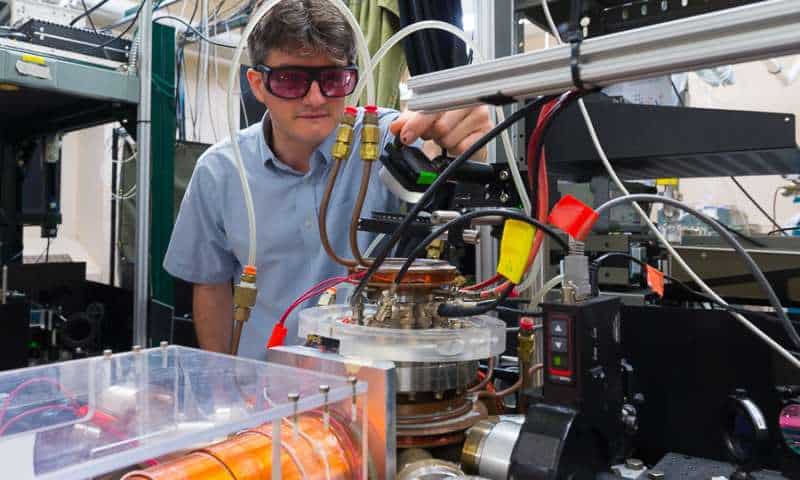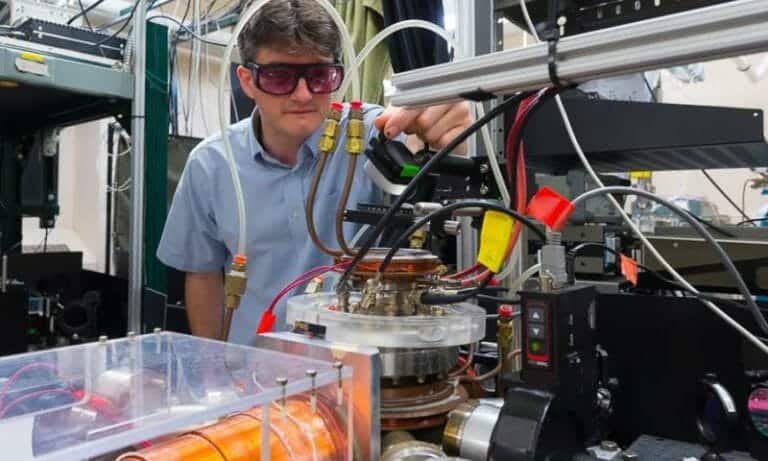Argonne physicist Peter Mueller and his colleagues are selectively capturing and counting rare isotopes of krypton to determine the age of ice and groundwater. Credit: Argonne National Laboratory
We tap it, pump it and draw it from below the surface of every imaginable landscape, from desert to well-manicured suburban yard. It is the one essential ingredient required to sustain life. Water.
So there is little wonder that we constantly question where it comes from, where it’s going, how much is available and whether it is and will remain potable. Thanks to exceedingly rare isotopes of krypton (Kr) and the innovative handiwork of researchers at the U.S. Department of Energy’s (DOE) Argonne National Laboratory, we can now answer many of those questions that could not be addressed previously with more traditional methods.
A unique, laser-based, atom-counting technique called Atom Trap Trace Analysis (ATTA), developed with support from DOE’s Nuclear Physics program, is helping physicists at Argonne selectively capture and count the isotopes 81 Kr and 85 Kr to determine the age of ice and groundwater. The results provide valuable information about the dynamics, flow rates and direction of water in aquifers, particularly those vital to arid regions.
Refinements to the […]
Full article: Radiokrypton dating plumbs mysteries of water aquifers



